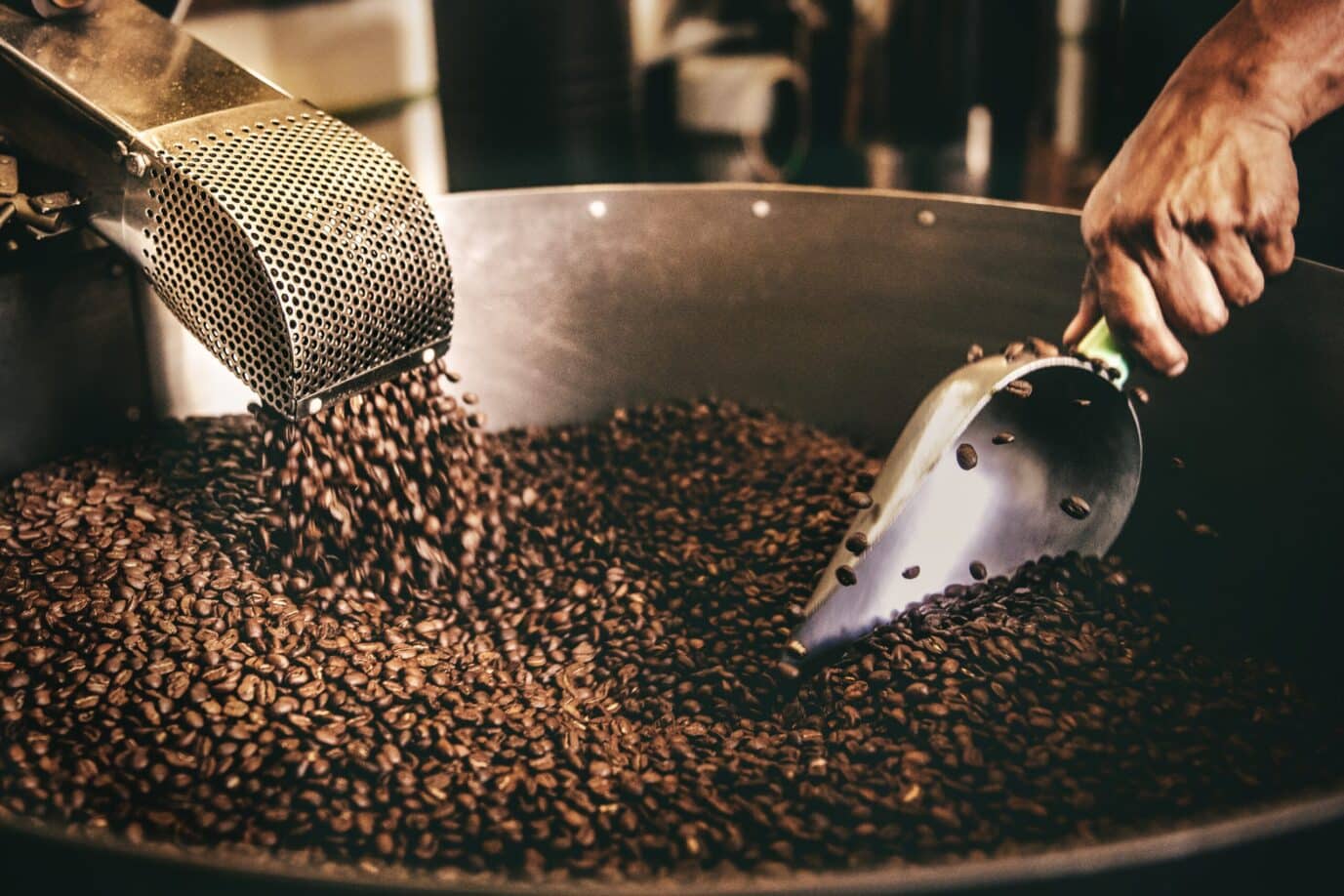September 9, 2022
From Seed to Cup: The Supply Chain of Coffee

Coffee—it’s known, it’s loved, and it’s consumed in masses every year. In fact, last year’s numbers show that over 165 million bags of coffee were consumed worldwide. At Numa, our pride and joy is our roast-to-order coffee beans. Behind your morning cup of coffee lies the supply chain that helps bring you your caffeine fix. It involves numerous steps and individuals who make it all happen. Throughout every phase, we aim to ensure that our specialty beans are fair-traded and ethically sourced/produced.
Phase 1
Before coffee beans can be harvested and used, they must be grown! The first phase of the supply chain ecompasses the agricultural side of coffee beans. The majority of coffee beans are planted and cultivated in the Bean Belt, found near the equator and between the Tropic of Cancer and the Tropic of Capricorn.
Growing
Farmers plant coffee seeds in the midst of the rainy season to ensure the best crop. Trees will begin to bear fruit, known as the coffee cherry, in about three to four years. Once they turn a vivid red color, they are ripe and ready to be picked. Each tree will produce over a pound of coffee beans annually. These trees can then continue to produce for well over 20 years.
The location of the bean’s cultivation matters! Taste is certainly altered by the climate, soil, and even the elevation. There are two main variations of coffee beans: Arabica and Robusta. They differ in price, taste, and acidity.
Processing
Once the cherries are harvested, they are quickly processed. The fruit has a short lifespan and farmers cannot risk spoilage. There are two methods when it comes to processing the cherries.
Dry Method- When water sources are not plentiful, this method proves to be the most efficient. Cherries are sorted and spread among surfaces that will receive adequate sunlight. They are turned, raked, and covered at night to avoid rain and rotting. This method aims to dry up any moisture found in the fruit. After two weeks, the moisture content should be around 10.5%. The dried fruit is now a green coffee bean.
Wet Method- If water supply does not pose a challenge, this method is utilized. It begins with the pulping of the cherries. Moved through a machine, the skin and pulp become separated from the bean itself. The beans then get placed into huge water tanks where they will undergo a fermentation process. On average, it takes about a day for the outer layer (parenchyma) to dissolve via enzymes.
In both processes, the beans are then washed, dried, hulled, sorted and ready for the next step!
Shipping
In a coffee-loving world, one can only imagine how massive and intricate the global supply network for coffee beans is. These ready-to-roast green beans are shipped internationally from producing countries to companies who will then distribute them to consumers.
Phase 2
Once the beans are shipped around the globe, it is up to a company’s discretion to determine the next steps. At Numa, we are sure to use fair-trade, ethically sourced beans. Besides a morally sound product, our roasted beans highlight the fresh, top-notch quality that we so passionately stand for.
Roasting
In the roasting stage, the beans undergo drastic changes, detailed in three precise steps.
- Drying Phase
It begins with the roaster reaching temperatures in excess of 400F. Then, the raw coffee makes its way into a drum where the roasting begins. High amounts of heat infiltrate the drum, and the beans take on a yellow hue. Their brightness increases before they fully darken. The purpose of this step is to lower the moisture content dramatically, which then increases the internal temperature.
- Maillard Phase
Here, chemical reactions between amino acids and reducing sugars begin to create the distinctive flavor, color, and aroma that coffee is known for. The coffee begins to darken as it becomes exposed to extreme heat.
- Roast Development
Ultimately, the beans undergo final changes that determine whether it will be a light, medium, or dark roast. It begins with First Crack, which is the point in the roast where the beans crack open a bit (it actually resembles popcorn popping) to allow steam and carbon dioxide to escape. At this point, the beans are technically considered roasted and ready to consume. However, many roasts go beyond this and experience a second, less audible crack (this would be considered a dark roast.)
At Numa, our beans are freshly roasted at our Detroit-area facility and then they’re off to you!
Packaging and Delivery
Following the roasting process, the beans are packaged and sealed. Finally, the last step has arrived! Bags of coffee are then delivered and shipped to wholesalers, retailers, and individual consumers.
Phase 3
YOU!
Now, the best part—you get to drink the coffee! Stop by our roastery in Clinton Township, Michigan (about 30 minutes north of Detroit) to check out the amazing organic and fair trade coffees that Numa has carefully crafted for your enjoyment. Quality from seed to cup is truly our priority. Great coffee and the well-being of those who help produce it are not mutually exclusive. This is something Numa knows and exudes in our work every day. We look forward to seeing and serving you!
